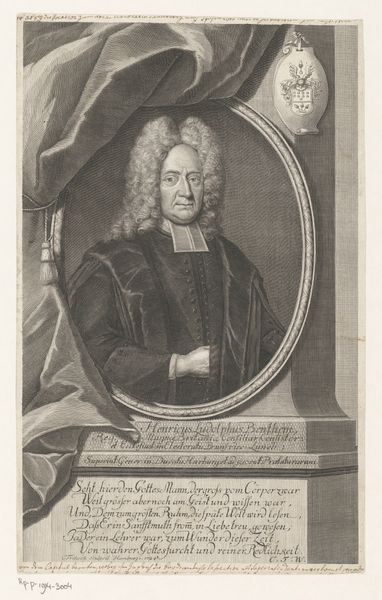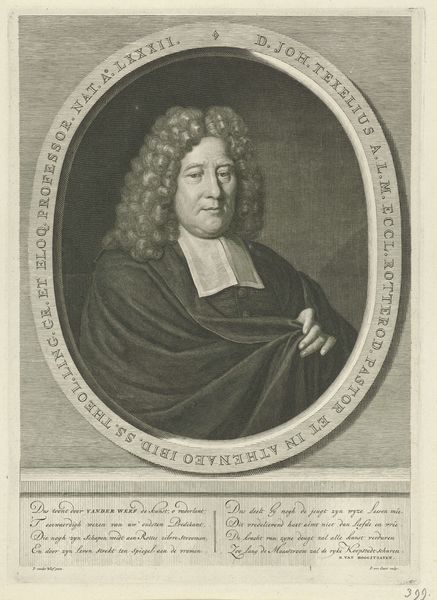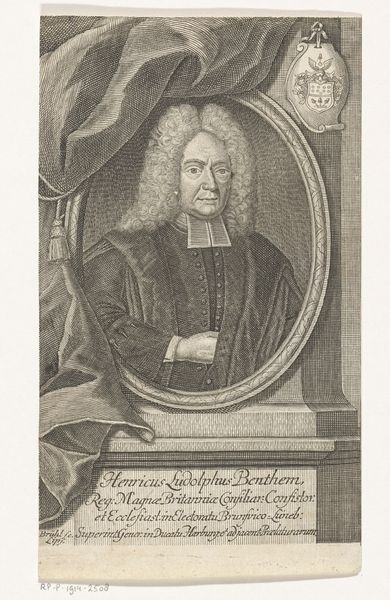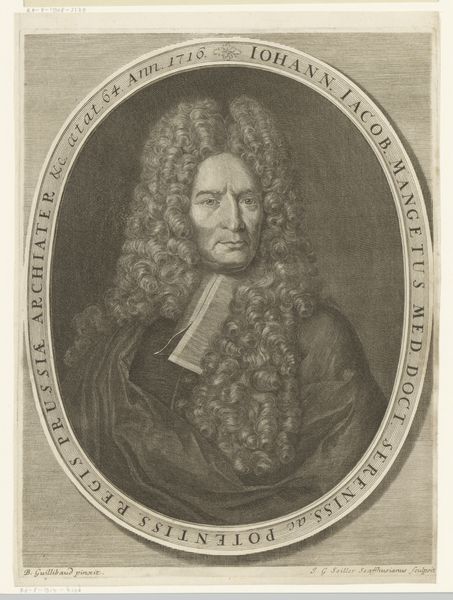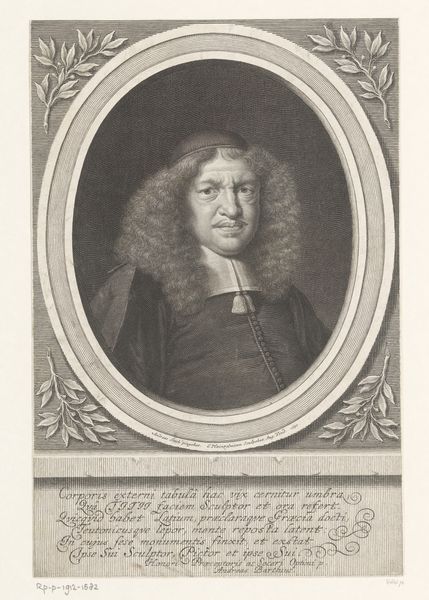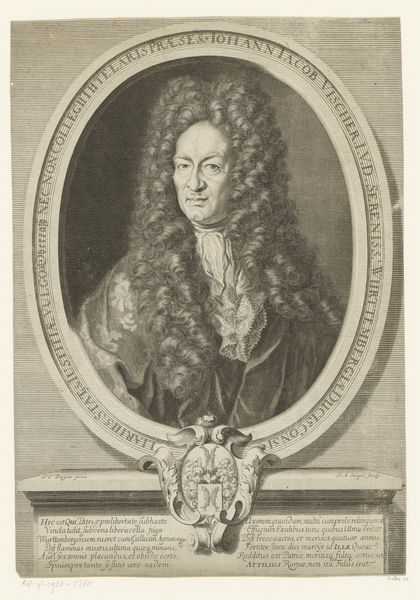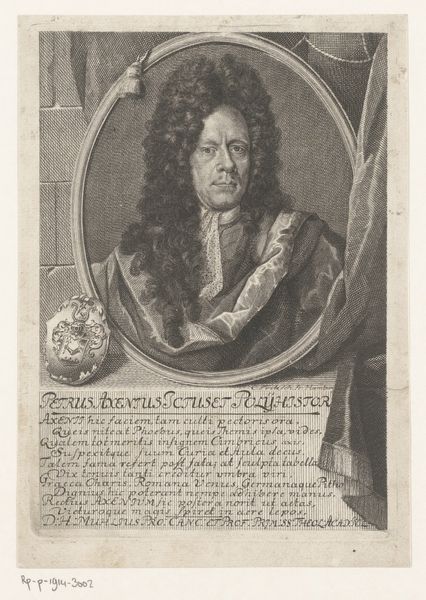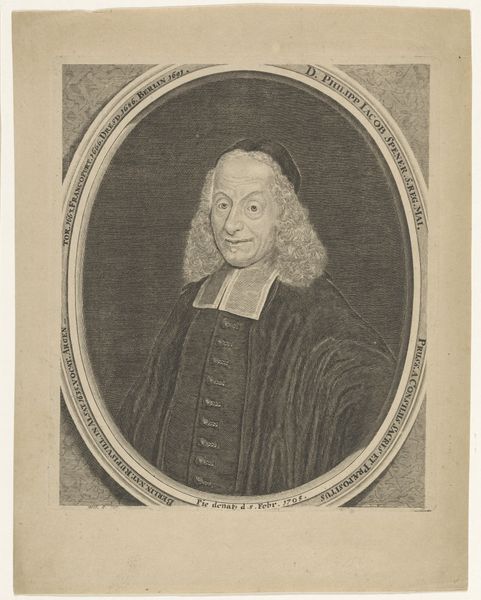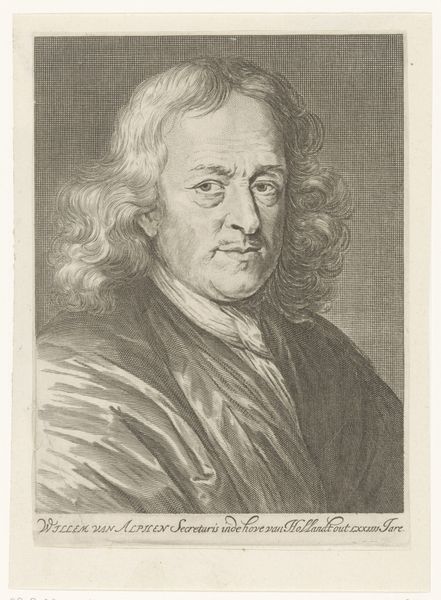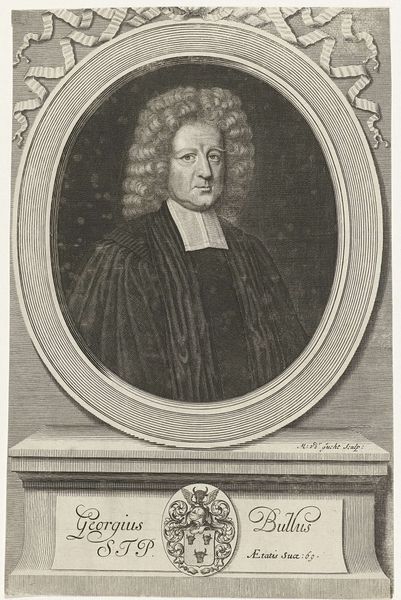
engraving
#
portrait
#
baroque
#
history-painting
#
engraving
#
realism
Dimensions: height 212 mm, width 153 mm
Copyright: Rijks Museum: Open Domain
This engraving of Ernst Salomon Cyprianus was made by Tobias Gabriel Beck in Germany, sometime around the early 18th century. At this time, portraits were potent symbols of status, communicating the sitter’s identity and role in society. Here, Cyprianus is presented as a figure of authority, from the formal composition to the Latin inscription denoting his titles: Doctor of Theology, church counselor. Yet the very existence of this image speaks to the transformation of religious authority in the period following the Reformation. The printing press, once viewed with suspicion by religious institutions, had become a key means of disseminating ideas and cultivating reputations. The creation and circulation of printed portraits played a crucial role in shaping public opinion and establishing individual prominence. This image, as with any artwork, gains deeper meaning when we consider the social and institutional forces that shaped its production and reception. Through careful historical research, we can better understand the complex interplay between art, power, and society.
Comments
No comments
Be the first to comment and join the conversation on the ultimate creative platform.
